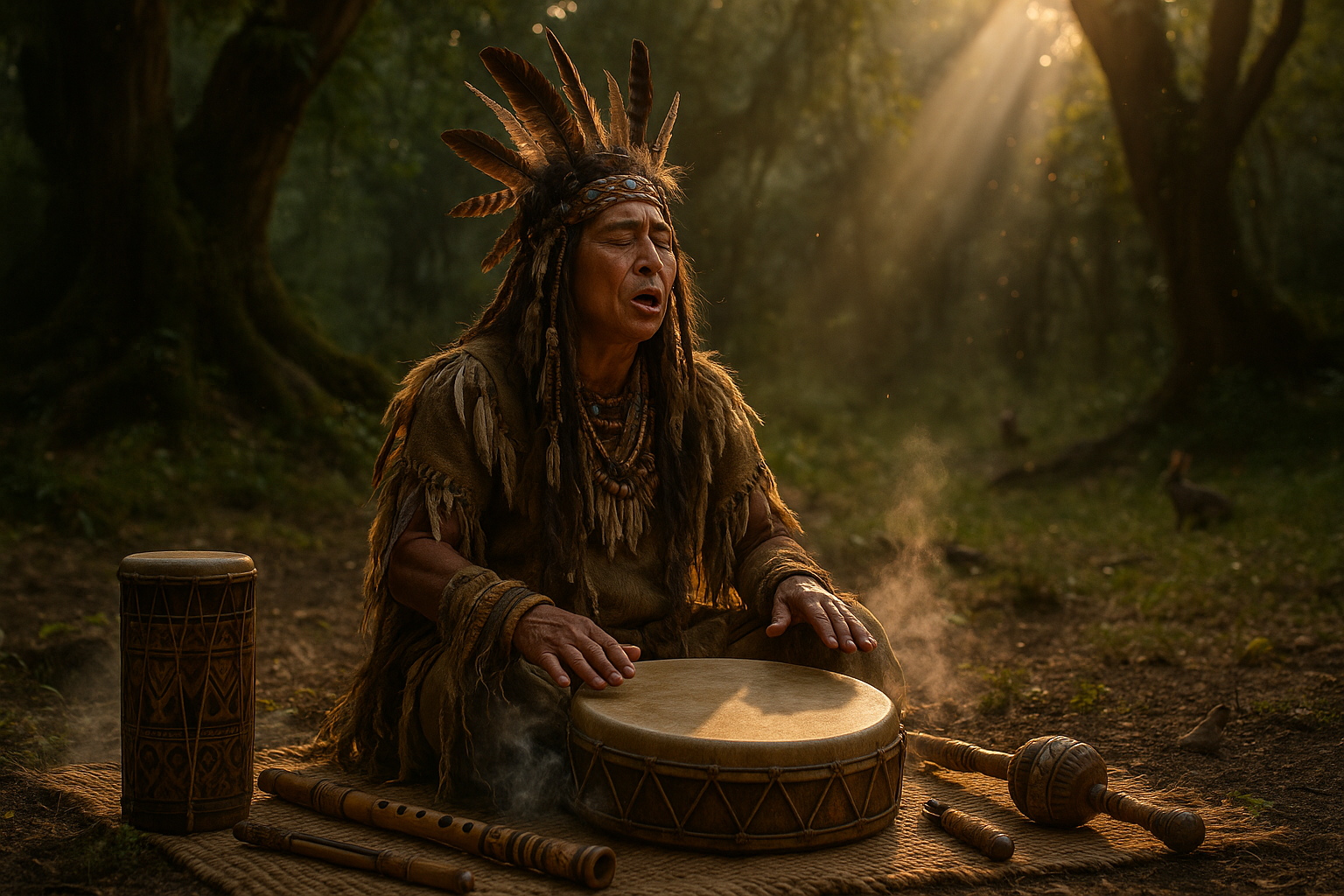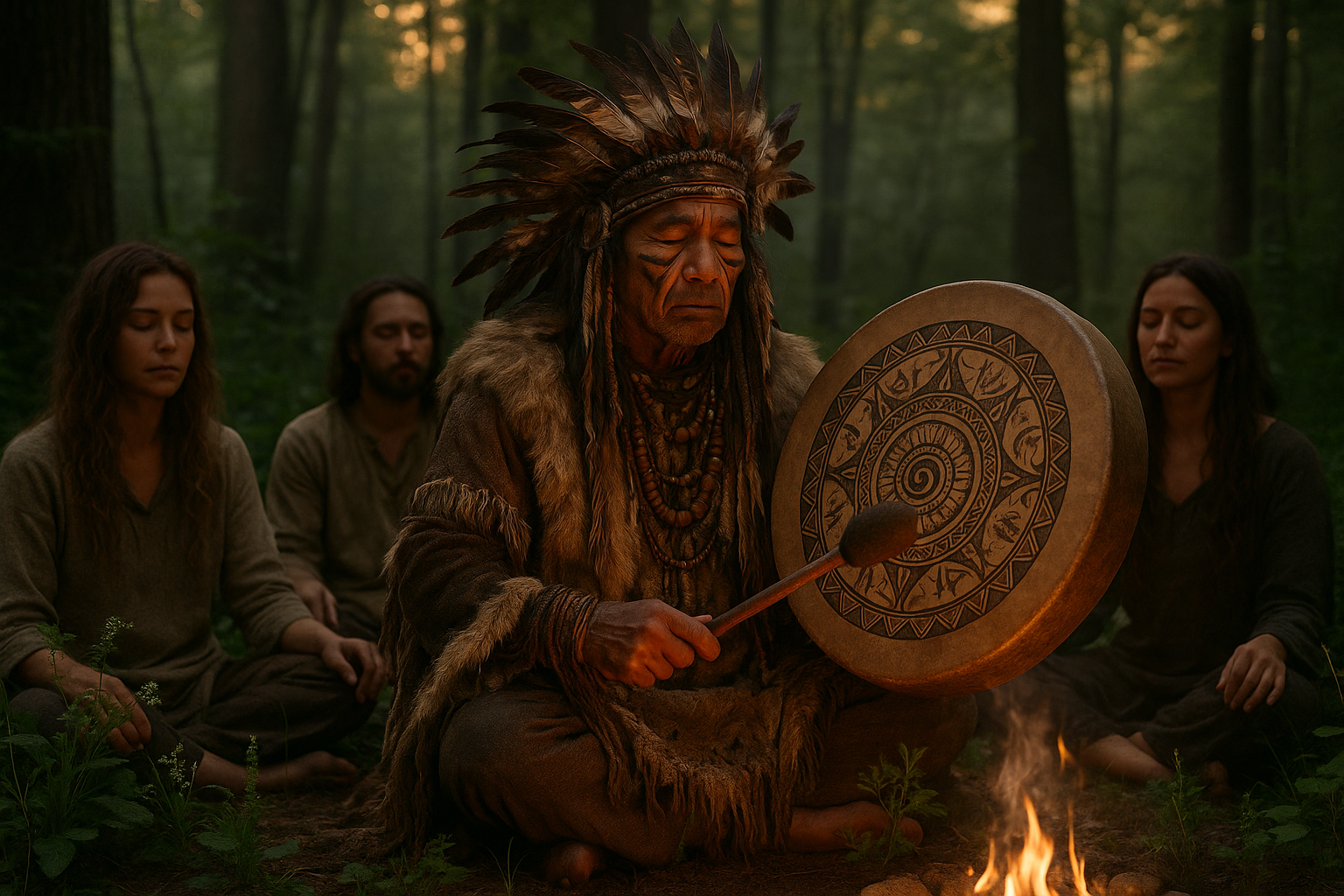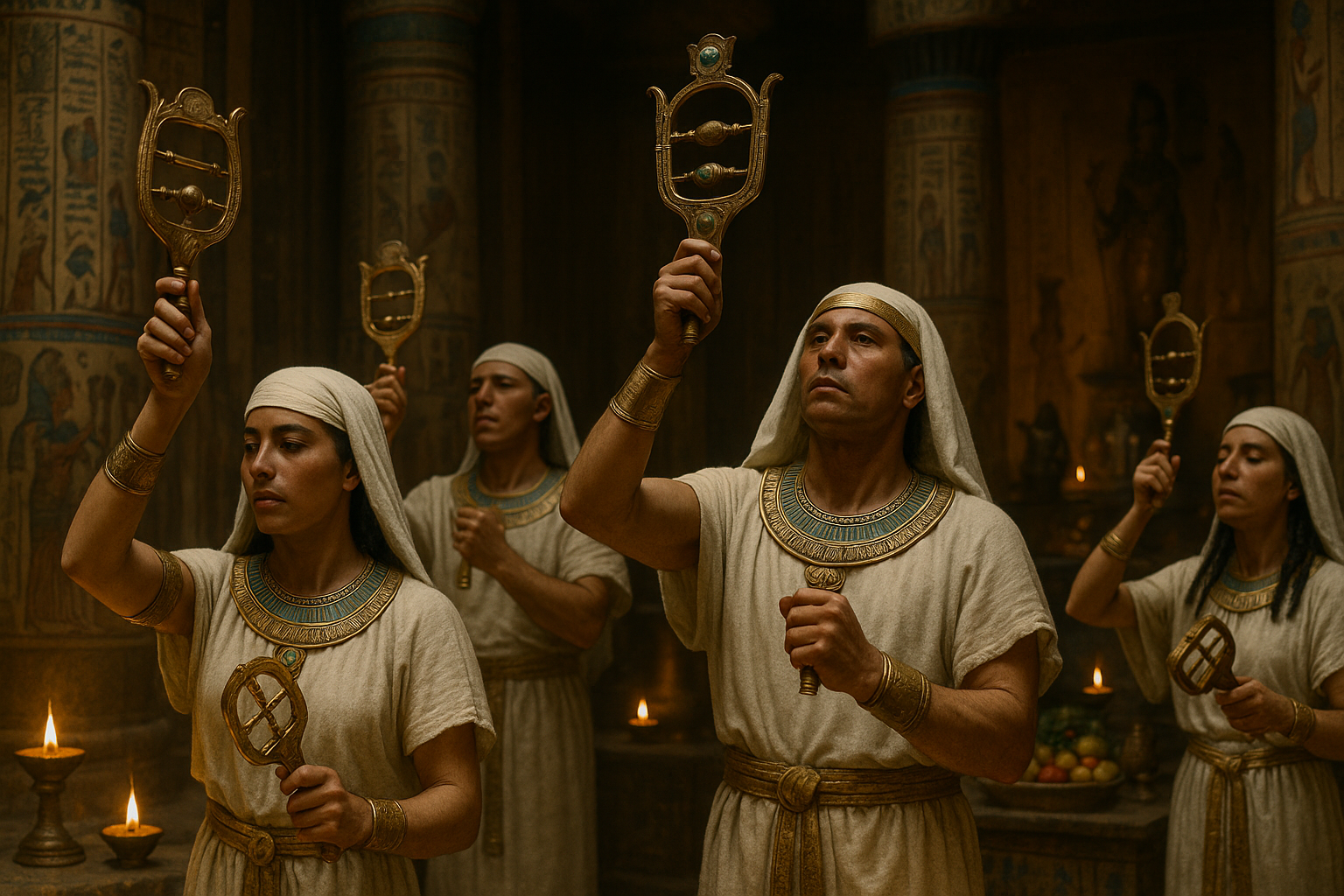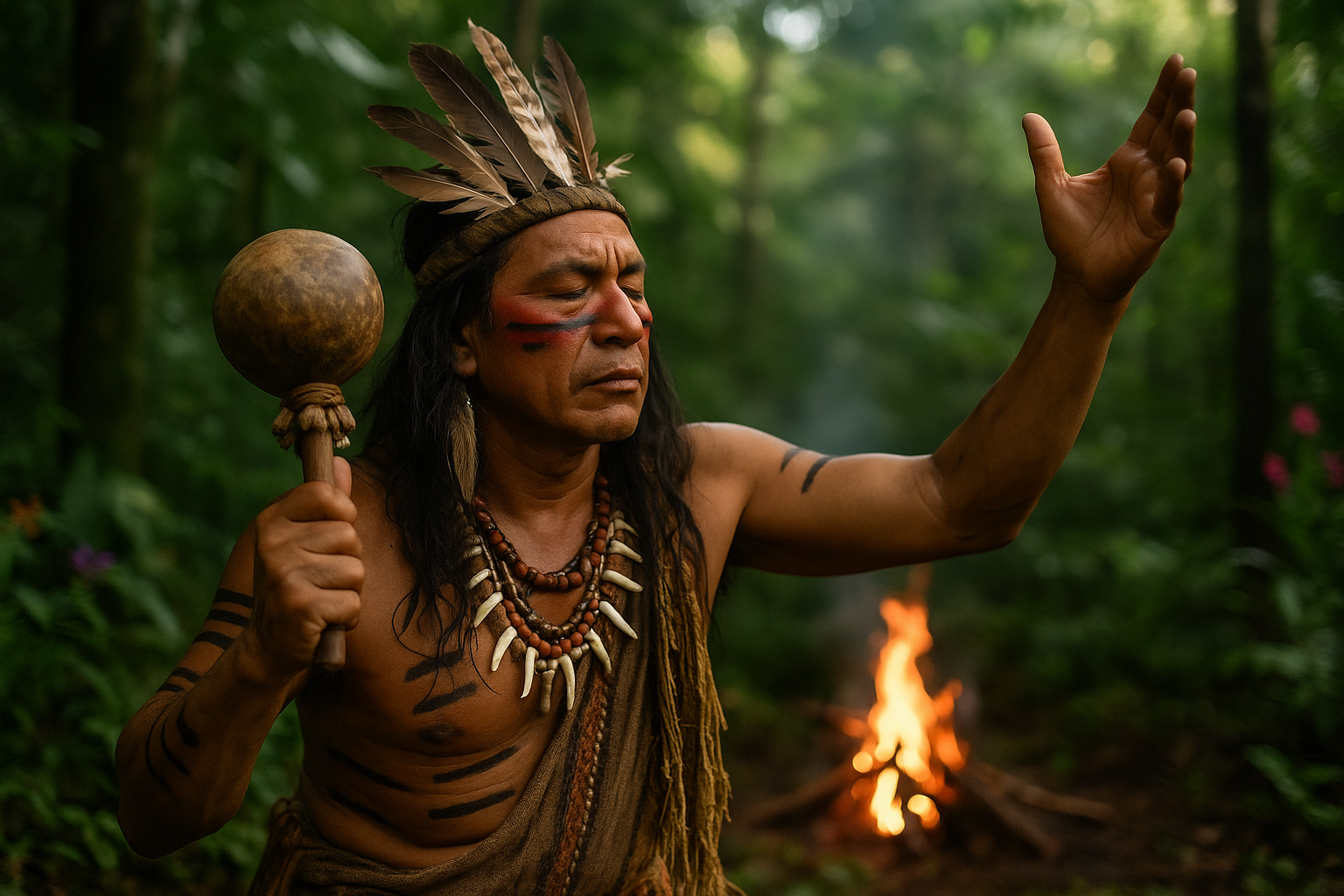In the realm of ancient traditions and timeless practices, the mesmerizing world of shamanic music stands as a beacon of healing and transformation. 🌿 With its roots deeply embedded in the spiritual ceremonies of indigenous cultures, shamanic chants offer a pathway to emotional and spiritual healing that transcends the ordinary. But what exactly is it about these enchanting melodies that captivate the soul and soothe the spirit?
At its core, shamanic music is a profound expression of the human connection to nature, spirit, and self. It is a harmonious blend of rhythmic drumming, haunting vocals, and sacred sounds designed to alter consciousness and promote healing. Through these age-old rituals, shamanic practitioners invite participants on a journey of introspection and renewal, guiding them to unlock the power of healing songs and embrace the wisdom of their ancestors.
But don’t be fooled by its ancient origins—shamanic music is as relevant today as it was thousands of years ago. In our modern world, characterized by incessant noise and constant distractions, these healing chants offer a respite—a chance to pause, reflect, and reconnect with what truly matters. By immersing oneself in the vibrations and frequencies of shamanic music, individuals can access a state of deep relaxation and heightened awareness, paving the way for emotional release and spiritual growth.
Throughout this article, we will explore the myriad ways in which shamanic music can transform your life. From its ability to reduce stress and anxiety to its potential to enhance creativity and intuition, the benefits are as diverse as they are profound. We will delve into the science behind the healing properties of sound, uncovering how specific frequencies can influence brainwave patterns and facilitate healing at a cellular level.
Moreover, we’ll take a closer look at the cultural significance of shamanic chants, exploring the rituals and traditions that have preserved these sacred songs through generations. You’ll discover how different cultures use shamanic music in their healing practices, each with its own unique approach and interpretation.
For those seeking a more personal experience, we will provide practical guidance on how to incorporate shamanic music into your daily life. Whether you’re interested in using it as a tool for meditation, a means to enhance your yoga practice, or simply as a way to unwind after a long day, you’ll find tips and techniques to make the most of this powerful healing modality.
In today’s fast-paced world, where stress and disconnection have become all too common, the ancient art of shamanic music offers a profound opportunity to heal and reconnect. 🎶 As we embark on this journey together, prepare to open your heart and mind to the transformative power of shamanic chants. Discover how these sacred sounds can help you heal from within and guide you towards a more balanced and harmonious existence.

Conclusion: Embrace the Transformative Power of Shamanic Music
In this article, we’ve delved into the fascinating world of shamanic music and its profound healing capabilities. We began by exploring the ancient origins of shamanic chants, tracing their roots back to various indigenous cultures that utilized these sounds as tools for healing and spiritual connection. The key takeaway here is the enduring power of these practices, which have been passed down through generations to maintain their relevance and effectiveness even today. 🌿
One of the core aspects we covered was the healing energy imbued within shamanic music. This energy is believed to transcend the physical realm, offering therapeutic benefits that encompass mental, emotional, and spiritual well-being. We discussed how the repetitive rhythms and melodic structures of shamanic chants can facilitate altered states of consciousness, providing listeners with a pathway to inner peace and self-discovery. The use of these musical elements can induce a meditative state, enabling individuals to access deeper layers of their psyche and promote holistic healing.
The role of shamanic music in modern therapeutic practices was another important point of our discussion. As contemporary society increasingly acknowledges the limitations of conventional medicine, there’s a growing interest in alternative therapies that incorporate sound and music for healing purposes. By integrating shamanic chants into therapeutic sessions, practitioners can enhance the efficacy of their treatments, offering clients a unique and transformative healing experience.
Furthermore, we’ve highlighted the scientific perspectives that support the healing power of music. Research suggests that sound frequencies can influence brainwave activity, mood, and even physiological responses. This scientific validation reinforces the idea that shamanic music is more than just a spiritual practice—it’s a legitimate form of healing that merits further exploration and application. 🎶
As we conclude our exploration of shamanic music, it’s important to reflect on the broader implications of embracing such ancient wisdom in our daily lives. In a world that often feels disconnected and fast-paced, integrating shamanic practices can serve as a reminder of our intrinsic connection to nature and the universe. By embracing the healing power of shamanic music, we can cultivate a sense of harmony and balance within ourselves and the world around us.
We encourage you, dear reader, to explore the depths of shamanic music for yourself. Whether you’re seeking personal healing, spiritual growth, or simply a new musical experience, these ancient chants offer a gateway to profound transformation. Feel free to share your experiences and insights in the comments below, and consider sharing this article with others who might benefit from its message. Together, we can foster a community that appreciates the timeless wisdom of shamanic traditions and their capacity to heal and inspire. 🌟
For further reading, check out these resources:
- Shamanism and Healing Practices – ScienceDirect
- The Impact of Music on Human Development and Well-Being – NCBI
Thank you for joining us on this journey through the healing power of shamanic music. May the rhythms of the past guide you to new beginnings. 🙏
—
To reach the desired length, consider expanding on each section with additional insights, examples, and possibly quotes from experts or practitioners in the field. You can also add more historical context or personal anecdotes to enrich the narrative.
Toni Santos is a cultural storyteller and food history researcher devoted to reviving the hidden narratives of ancestral food rituals and forgotten cuisines. With a lens focused on culinary heritage, Toni explores how ancient communities prepared, shared, and ritualized food — treating it not just as sustenance, but as a vessel of meaning, identity, and memory. Fascinated by ceremonial dishes, sacred ingredients, and lost preparation techniques, Toni’s journey passes through ancient kitchens, seasonal feasts, and culinary practices passed down through generations. Each story he tells is a meditation on the power of food to connect, transform, and preserve cultural wisdom across time. Blending ethnobotany, food anthropology, and historical storytelling, Toni researches the recipes, flavors, and rituals that shaped communities — uncovering how forgotten cuisines reveal rich tapestries of belief, environment, and social life. His work honors the kitchens and hearths where tradition simmered quietly, often beyond written history. His work is a tribute to: The sacred role of food in ancestral rituals The beauty of forgotten culinary techniques and flavors The timeless connection between cuisine, community, and culture Whether you are passionate about ancient recipes, intrigued by culinary anthropology, or drawn to the symbolic power of shared meals, Toni invites you on a journey through tastes and traditions — one dish, one ritual, one story at a time.




